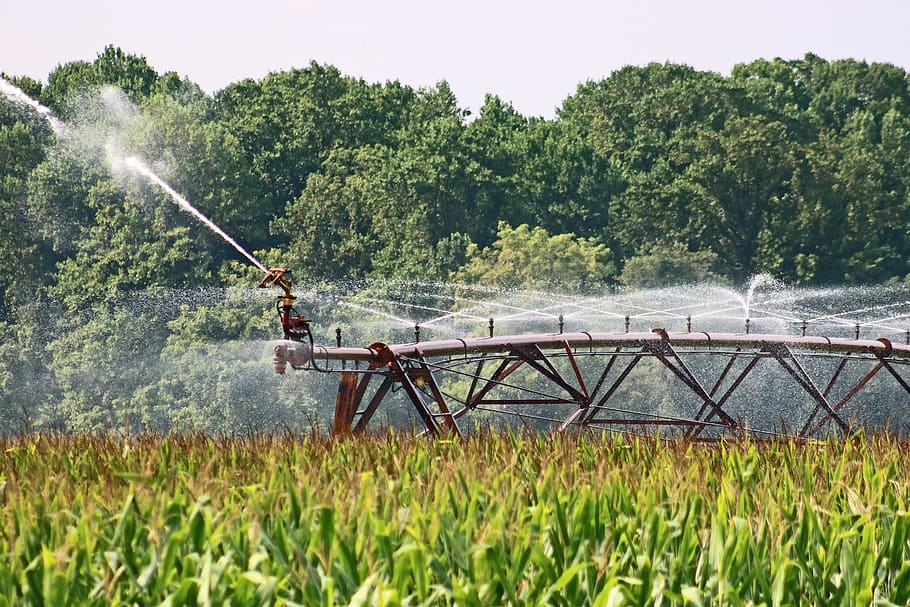Irrigation
Contents |
[edit] Introduction
Irrigation is the controlled watering of land by artificial means. It is primarily used to sustain crop growth, cool livestock, suppress weeds or protect land from freezing. It can also be used as a control measure in areas where lack of consistent water supply can have a negative impact on the landscape.
Irrigation has also been used for non-agricultural purposes such as sewage disposal and dust suppression.
[edit] History
As an agricultural tool, irrigation has been used around the world for thousands of years. The earliest evidence of its existence was found in Iran; this system is believed to date from 6000 BC.
In Egypt, significant irrigation measures were built around 3000 BC to control the level of the Nile. In addition to supplying water to crops, this irrigation project also involved the construction of other complex water engineering measures.
Irrigation was used extensively in ancient civilisations in China, India, Sri Lanka, Korea and the Americas.
[edit] Types of irrigation
There are several methods of irrigation, which vary in how the water is supplied. Some of the most common types include:
- Surface irrigation (also known as gravity irrigation).
- Micro-irrigation (also referred to as localised irrigation, low volume irrigation, trickle irrigation or drip irrigation).
- Sprinkler irrigation (also referred to as overhead irrigation).
- Subirrigation (or subsurface irrigation).
There are several water sources that can be used for irrigation purposes. These include:
- Groundwater (from springs or taken from wells).
- Surface water (taken from rivers, lakes or reservoirs).
- Treated water (including wastewater, desalinated water or drainage water).
- Floodwater harvesting (referred to as spate irrigation) or fog collection.
[edit] Related articles on Designing Buildings Wiki
Featured articles and news
Homes England creates largest housing-led site in the North
Successful, 34 hectare land acquisition with the residential allocation now completed.
Scottish apprenticeship training proposals
General support although better accountability and transparency is sought.
The history of building regulations
A story of belated action in response to crisis.
Moisture, fire safety and emerging trends in living walls
How wet is your wall?
Current policy explained and newly published consultation by the UK and Welsh Governments.
British architecture 1919–39. Book review.
Conservation of listed prefabs in Moseley.
Energy industry calls for urgent reform.
Heritage staff wellbeing at work survey.
A five minute introduction.
50th Golden anniversary ECA Edmundson apprentice award
Showcasing the very best electrotechnical and engineering services for half a century.
Welsh government consults on HRBs and reg changes
Seeking feedback on a new regulatory regime and a broad range of issues.
CIOB Client Guide (2nd edition) March 2025
Free download covering statutory dutyholder roles under the Building Safety Act and much more.
Minister quizzed, as responsibility transfers to MHCLG and BSR publishes new building control guidance.
UK environmental regulations reform 2025
Amid wider new approaches to ensure regulators and regulation support growth.
BSRIA Statutory Compliance Inspection Checklist
BG80/2025 now significantly updated to include requirements related to important changes in legislation.























